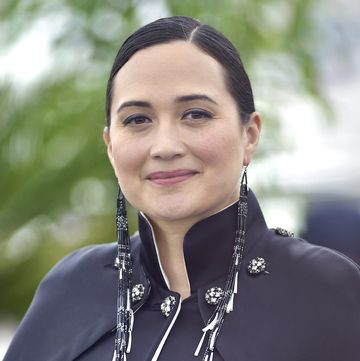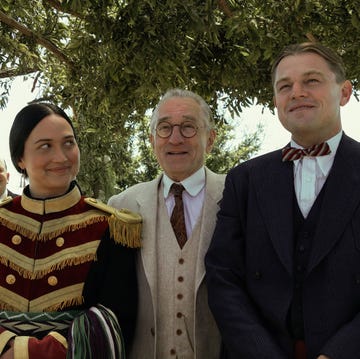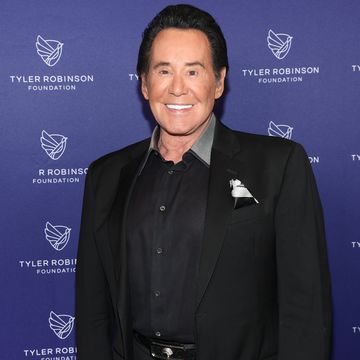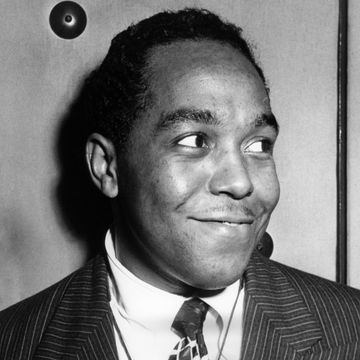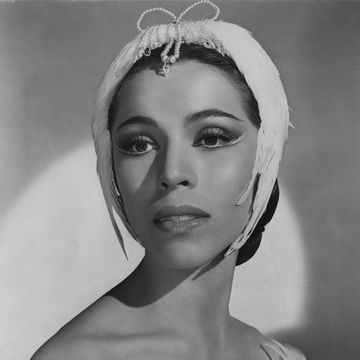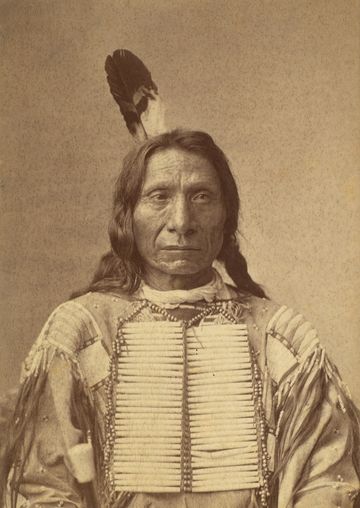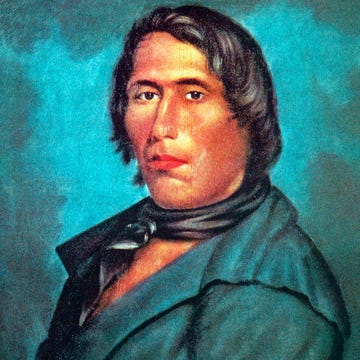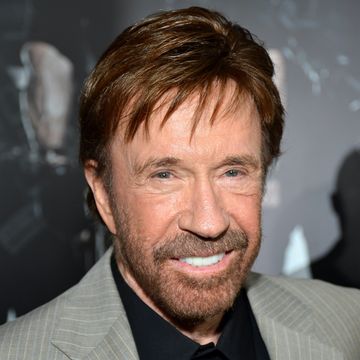Though their contributions have often been overlooked, Native Americans have long had a profound impact on both their communities and the United States as a whole. For centuries, leaders including Tecumseh, Sequoyah, and Nanye’hi have left a lasting mark with their leadership, bravery, and innovations. From warriors who used their military prowess to resist colonization, to political leaders who spearheaded peace treaty talks, these Indigenous people have forever shaped history in the United States.
Native American Heritage Month is celebrated every November, honoring cultures, traditions, history, and art of Indigenous peoples. Read on to learn about some of the most influential Native American leaders throughout history.
Powhatan
c. 1540s–1618
Also known as Wahunsenacawh, Powhatan is perhaps best remembered as the father of Pocahontas, a woman (also called Matoaka) known for her role in English colonial settlement at Jamestown, Virginia, in the early 1600s. He was also a massively powerful chief at the time, with his authority extending over 30 tribes and between 13,000 and 34,000 Algonquian-speaking people of the coastal Virginia area.
Powhatan had a mixed relationship with the newcomers; his early assistance gave way to open warfare as they battled for control over the territory, though relations between Indigenous people and European settlers were largely peaceful by the time of his death in 1618.
Tamanend
c. 1628–1701
As with Powhatan, little is known of Tamanend’s life beyond his encounters with 17th century English settlers. The leader of the Lenni-Lenape tribe is best-known for his involvement in the 1682–1683 Treaty of Shackamaxon, allegedly forged between the Lenni-Lenape and William Penn in modern-day Philadelphia. The wisdom and generosity showed by the “Affable One” endured for generations, with colonists celebrating him as the “Patron Saint of America” in the years around the Revolutionary War.
The legendary chief also sparked the formation of numerous social groups in his honor, including the infamous “Tammany Hall” organization that dominated New York City politics for more than 150 years.
Thayendanegea
1743–1807
Introduced to colonial culture at an early age, Thayendanegea, also known by his English name Joseph Brant, fought for the British in the French and Indian War, converted to Christianity, and served as a missionary among the Iroquois people. But the warrior and scholar remained fiercely loyal to his Mohawk roots, and he rallied four of the six Iroquois nations to the side of what he felt was the more protective British Empire in the American Revolution.
Brant fought with distinction in several major skirmishes in the New York area, rising to the rank of captain, though he faced a continuous uphill battle in its aftermath as he sought to broker peace and prosperity for his people.
Nanye’hi
c. 1738–1823
Also known by her English name Nancy Ward, Nanye’hi was a Cherokee political leader who advocated for coexistence with colonists. In 1755, she led warriors to victory against the Creek people in the Battle of Taliwa, which earned her the title of Ghigau, or “Beloved Woman.” Nanye’hi was the only woman with voting power on the Cherokee Council of Chiefs and served as the head of the Women’s Council.
She was also involved in treaty negotiations with white settlers during the American Revolution and eventually married an English trader named Bryant Ward. Later in life, Nanye’hi spoke out against the continued cession of Native land to the U.S. federal government.
Sequoyah
c. 1775–1843
A silversmith and artist who was also known as George Gist or Guess, Sequoyah made his greatest contribution to Indigenous culture with his formation of the Cherokee syllabary. His work, reportedly fine-tuned over the course of 12 years, produced a collection of 85 symbols to match the sounds of his traditional language. It caught on at a greater speed after its formal adoption by the Cherokee Nation in 1825, thanks to the launch of the bilingual Cherokee Phoenix and Sequoyah’s efforts to foster mass literacy.
His syllabary remains in use today, while his name lives on through the ancient trees that tower over the Northwest.
Tecumseh
c. 1768–1813
The son of a Shawnee chief, Tecumseh became one of the most revered leaders of his time through his unyielding resistance to white settlement of tribal land and colonization. The full scope of his powers was on display in the early 1800s when he teamed with his brother Tenskwatawa to found the Prophetstown settlement in Indiana Territory and rallied considerable support for a pan-Indian alliance.
William Henry Harrison’s forces destroyed Prophetstown and eventually killed Tecumseh, but Harrison later co-opted the chief’s legacy for his run to the White House in 1840. General William Tecumseh Sherman revived his namesake’s memory with his own military successes during and after the Civil War.
Sacagawea
c. 1788–1812
A Lemhi Shoshone Native American who was abducted by an enemy tribe and found herself married to a French Canadian trapper, Sacagawea stepped into the limelight when she joined the Lewis and Clark expedition, baby boy in tow, in April 1805. She served as a translator for negotiations with the Shoshones, and the teenage mother contributed to the mission’s success thanks to her knowledge of vegetation and geographical checkpoints.
She endured illness and the elements until returning to her South Dakota home in August 1806. Sacagawea soon slipped back into the shadows and some records indicate she died less than a decade later, though another version holds that she rejoined her people and lived to be nearly 100 years old.
Red Cloud
1822–1909
A prominent Oglala Lakota chief of the Great Plains region, Red Cloud honed his fighting chops through early skirmishes with the Pawnee and Crow tribes before turning his focus to overreaching white settlers in the second half of the 19th century. He ignited what became known as Red Cloud’s War, which included an overwhelming victory over American forces at the Fetterman Massacre of December 1866.
However, Red Cloud largely abandoned the call to battle after signing the 1868 Treaty of Fort Laramie, even after the United States overran territorial boundaries the following decade, and he spent his remaining years pushing for gains through peaceful means.
Sitting Bull
c. 1831–1890
While Sitting Bull fought alongside Red Cloud in the 1860s, he diverged from the former over his refusal to commit his Hunkpapa Lakotas to the terms of a treaty. As a result, Sitting Bull became a central figure in the Great Sioux War of 1876, his vision of a military triumph presaging the historic defeat of General George Custer at the Battle of the Little Bighorn.
After surrendering in 1881, Sitting Bull briefly leveraged his celebrity as a member of Buffalo Bill’s Wild West Show, but he was killed after resisting arrest at the Standing Rock Reservation in 1890.
Crazy Horse
c. 1841–1877
Often mentioned in the same breath as Red Cloud and Sitting Bull, Crazy Horse was featured prominently at the Fetterman Massacre and led the charge at the Battle of the Little Bighorn. But the Oglala Lakota warrior stands on his own as a figure of mythical proportions, from his legendary fighting prowess to his refusal to be photographed during his lifetime.
His own life was relatively short, as he was killed shortly after surrendering in 1877 for attempting to help his sick wife and her parents, but his outsized memory lives on through the ongoing construction of an enormous monument in his honor in South Dakota.
Geronimo
1829–1909
A shaman of the Chiricahua Apaches, Geronimo spent much of his life fighting Mexicans, Americans, and competing tribes who sought control of modern-day Arizona and New Mexico. He was largely successful in those endeavors, his reputation bolstered by alleged mystical abilities to slow time and stop flying bullets. It took the efforts of 5,000 U.S. troops—one-quarter of the standing U.S. Army—and another 3,000 Mexicans to force Geronimo and his followers out of hiding in September 1886, making him the last Native American leader to surrender to the U.S. military.
Chief Joseph
c. 1840–1904
In contrast with contemporaries who became famous for defending their lands, Chief Joseph is remembered for a valiant effort to lead the Nez Perce out of harm’s way. The retreat, a deadly skirmish forcing his band of 700 people on the run from their Wallowa Valley home, came after years of resisting the U.S. government’s forced removal to a small Idaho reservation. After a three-month journey, they nearly made it to safety in Canada despite being outnumbered by 2,000 U.S. troops, until death and starvation of many Nez Perce forced Joseph to surrender with a memorable speech in October 1877.
“I am tired of fighting … My heart is sick and sad. From where the sun now stands, I will fight no more forever.”
Although he earned the respect of American military leaders, his hope of being allowed to return to the Northwest never came to fruition.
Wilma Mankiller
1945–2010
The narrative of the Native American quest for survival continues past the forced relocations and bloodshed of the 19th century, its latter chapters filled with stories like those of Wilma Mankiller. Named the first female chief of the Cherokee Nation in 1985, Mankiller spearheaded an array of health and education initiatives and is credited with boosting tribal membership and revenues by nearly 200 percent during her 10 years in charge.
She also helped establish the federal Office of Tribal Justice, authored two books, and taught at Dartmouth College. Her lifelong commitment to activism was rewarded with the Presidential Medal of Freedom, given to her by President Bill Clinton in 1998.
Read More About Wilma Mankiller
Catherine Caruso joined the Biography.com staff in August 2024, having previously worked as a freelance journalist for several years. She is a graduate of Syracuse University, where she studied English literature. When she’s not working on a new story, you can find her reading, hitting the gym, or watching too much TV.














